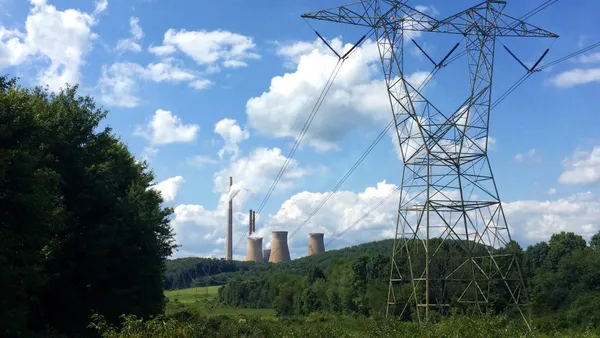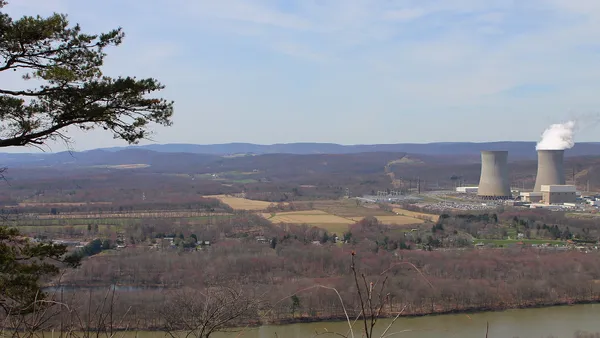Dive Brief:
- Power plants produce the largest share of the United States' greenhouse gas emissions, about 30% of air pollution in 2015, but federal regulators say the level is declining.
- Almost 1,500 facilities spewed 2 billion metric tons of carbon dioxide last year, according to the U.S. Environmental Protection Agency—a 6.2% decline compared to 2014 and an 11.3% decline since 2011.
- Emissions from large industrial sources, representing about half of total U.S. greenhouse gas emissions, were 4.9% lower than 2014, and 8.2% lower than in 2011.
Dive Insight:
President Obama's Climate Action Plan aims to reduce emissions at industrial facilities, power plants and on gas and oil lines, and EPA's most recent Greenhouse Gas Reporting Program data shows the impacts may be accelerating in the power sector.
More than 8,000 large facilities reported their direct greenhouse gas emissions, with power plant reductions of more than 6% last year and more than 11% over the last five years. On the other hand, petroleum and natural gas systems are the second largest stationary source of emissions, and despite declining 1.6% last year over 2014 numbers, their emissions remain 4.1% higher than in 2011.
While the emissions in the power sector appear to be declining, the upcoming battle over Obama's signature climate rule, the Clean Power Plan, could also shape how utilities deal with emissions in the future. But the trend is pretty clear: utilities are investing more in cleaner burning natural gas, and even gas-heavy generators are eyeing renewable energy as a solid investment as the decarbonization of the grid continues.
Globally, the landmark Paris Climate Accord is set to come into force by the end of the week after the European Parliament formally voted in favor of the agreement. To come into force, 55 countries representing 55% of global emissions must ratify it. Under the agreement, the U.S. must trim emissions 26% by 2025. The U.S. and China, the two largest contributors to greenhouse gas emissions, ratified the agreement last month. India's commitment pushes the number past 50% of emissions. The European Union's ratification, representing 12% of global emissions, would be enough to send the treaty into force.
The agreement isn't expected to dramatically change the short-term outlook for the U.S. power sector. But analysts cautioned utilities to watch how world leaders produce decarbonization goals out to midcentury, as those decisions will shape their investments today.
EPA said it will publish its 1990-2015 Inventory of U.S. Greenhouse Gas Emissions and Sink in about six months.














